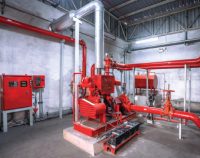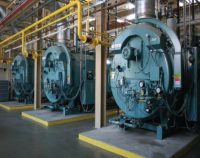Fire Protection Systems: 3 PDH
$18.00
SPECIFIC KNOWLEDGE OR SKILL OBTAINED
This course teaches the following specific knowledge and skills:
- Explain the various types of sprinkler systems
- Explain the various types of sprinklers
- Discuss the types of automatic sprinklers
- Discuss sprinkler system detection and indicating devices
- Describe sprinkler system inspection and testing procedures
- Explain types of gaseous extinguishing systems
- Discuss dry chemical extinguishing systems
- Explain the procedures associated with boiler water treatment and cleaning
- Describe the procedures for cleaning boiler firesides and watersides
- Describe the procedures associated with boiler maintenance
CERTIFICATE OF COMPLETION
You will be able to immediately print a certificate of completion after passing a 15-question multiple-choice quiz. The quiz can be retaken unlimited times until a passing grade of 70% or better is earned. This course satisfies three (3) hours of professional development (PDH).
Related Courses
Boiler Basics-Operation and Maintenance: 5 PDH
$30.00 Add to cartIn this course the student will understand steam generation, boilers and boiler components, and basic concepts in their operation and maintenance.Instructor: Seth Grablow, PESPECIFIC KNOWLEDGE OR SKILL OBTAINED
This course teaches the following specific knowledge and skills:
- Explain steam generation theory
- Explain boiler design requirements
- Discuss the different types of boilers
- Describe the different types of boiler fittings and accessories
- Identify the automatic controls associated with boilers
- Describe the different types of instruments and meters
- Explain the procedures associated with boiler water treatment and cleaning
- Describe the procedures for cleaning boiler firesides and watersides
- Describe the procedures associated with boiler maintenance
CERTIFICATE OF COMPLETION
You will be able to immediately print a certificate of completion after passing a 20 question multiple-choice quiz. The quiz can be retaken unlimited times until a passing grade of 70% or better is earned. This course satisfies five (5) hours of professional development (PDH).
Preview CourseClick “Preview Course” to view prior to purchaseClick “Add to Cart” to purchaseMicroturbine Generators: 1 PDH
$6.00 Add to cartIn this online course a student will understand microturbine generators, how they work, their performance characteristics, and what applications can benefit from this combined power & heat technology. Instructor: Juan Pesante, PESPECIFIC KNOWLEDGE OR SKILL OBTAINED
This course teaches the following specific knowledge and skills:
- Explain what microturbines are and how they function
- Discuss the basics components of microturbines
- Discuss part-load performance
- Explain effects of ambient conditions on performance
- Understand microturbine capital costs
- Discuss suitable applications for microturbines
CERTIFICATE OF COMPLETION
You will be able to immediately print a certificate of completion after passing a ten (10) question multiple-choice quiz. The quiz can be retaken unlimited times until a passing grade of 70% or better is earned. This course satisfies one (1) continuing education hour (CEH)/professional development hour (PDH) of continuing education.
Preview CourseClick” Preview Course” to View Prior to PurchaseClick “Add to Cart” to Purchase and Access Quiz




